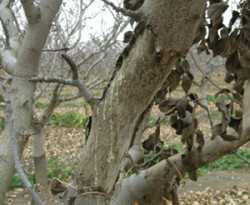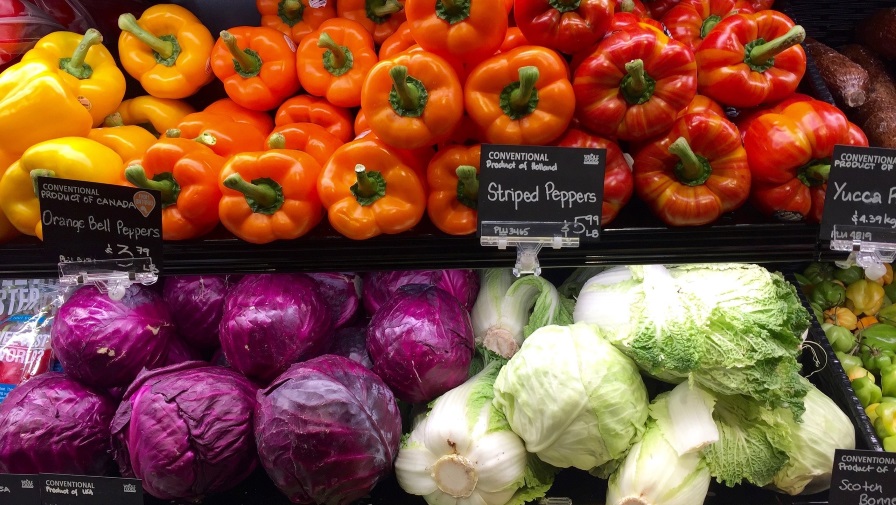Ground Squirrels Devastating To Pistachio Orchard

Oddly enough, when it comes to pests of tree nuts, it seems like the biggest ones get ignored. Most growers are keenly aware of the insect and disease pressures they face, but don’t give squirrels much thought. Ignorance is certainly not bliss, says University of California Cooperative Extension farm adviser Craig Kallsen, who has received several reports of significant ground squirrel damage to pistachio orchards in recent months. “Ground squirrels can be pistachio enemy number one,” he says. “They’re something growers really should know about.”
Kallsen, who serves growers in the Bakersfield region, says he thinks the reason the rodents are not talked about more is because their attacks are of the infrequent, hit-and-run variety. “Only the growers who’ve been hit seem to realize how much damage ground squirrels can cause,” he says. “They can do tremendous damage over a week or two.”
Another reason the squirrels don’t get nearly the attention they should, says Kallsen, is that they often strike at the time of year when growers aren’t around. In late fall, after the trees have been harvested, and the postharvest irrigations have been completed, most growers don’t see a need to be in their orchards. But that’s also the time of year, before the winter rains come and there is little green vegetation for the squirrels to eat, that pistachio trees look mighty inviting.
“The copious sap produced by a pistachio is a chewing enticement —they’re prolific gummers,” he says. “Ground squirrels can nibble on pistachio bark anytime, but when the annual green vegetation disappears, they can make a surprisingly swift transition to a bark-only diet.”
No Sleep For The Wicked
While ground squirrels are most likely to attack in late fall — as well as late spring when weeds in the middles tend to dry up — they can do damage any time of the year, Kallsen emphasizes. In the San Joaquin Valley, the squirrels do become less active in the winter, but they never truly hibernate. “Growers should ensure that someone is scouting their orchards, even in the dead of winter, to make sure that ground squirrels are not actively consuming trees,” he says. “After seeing the extent of damage ground squirrels can cause, I do not like to see any ground squirrel burrows in an orchard.”
The squirrels burrow underground and damage tree roots, opening up avenues of infection by fungal pathogens, says Kallsen. Also, as previously mentioned, they like to munch on the trees’ bark. But that doesn’t mean they just take a few nibbles. They will girdle and kill trees in surprisingly short order. In fact, Kallsen recalls visiting one orchard in which squirrels had severely damaged 10% to 15% of the trees. “Bark and cambium were completely stripped from the primary scaffolds over a distance of 3 feet on some of the trees,” he says. “They’d been chewed up something frightful.”
No Time Like The Present
To control ground squirrels, the most common and cost-effective means is poison baiting. Baiting is most effective beginning this time of year — in late spring and early summer. However, because baiting entails dangers to domestic animals, non-target wildlife, and even humans, Kallsen says it’s critical to read and follow the label regulations on all baits before using them. In addition, there can be local restrictions, so you should check with your local county ag commissioner’s office.
One final consideration regarding poison baiting is to be careful not to harm endangered species. Pretty much every grower in the San Joaquin Valley has heard a horror story about what happened to someone who allegedly threatened the habitat of a kangaroo rat. Don’t be next. Kallsen recommends checking out the Web site of the California Department of Pesticide Regulation (California produces
95% of the nation’s pistachios) at www.cdpr.ca.gov for information on threatened and endangered species in your area, modifications that might have to be made to the bait, baiting methods, bait stations, and pre-baiting animal identification requirements.
Before buying baits, however, growers should do their best to make their orchards as inhospitable as possible. The squirrels often move into orchards from surrounding vegetation, so that should be limited as much as possible, as should, of course, weeds within the orchard. In addition, natural ground squirrel controls, such as hawks, coyotes, foxes, etc., are more effective if ground squirrel hideouts are removed. Hideouts include old stumps, dead trees, brush, junk, and rock piles. Finally, plowing along the orchard boundary can destroy old burrows that often provide handy routes of invasion from neighboring colonies.









